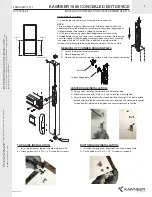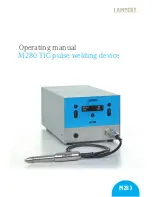
Audio Production System with Optional Networking
MIC OPEN SYSTEMS AND ON AIR PROTECTION CONFIGURATION
Mic Open systems are used to control external devices, relative to the ‘On Air’ status of a signal source. Mic open
systems can CUT or DIM a loud speaker feed to avoid feedback, or control relays for switching purposes, such as
turning on ON AIR lights. This On Air Protection is an important part of the Broadcast System.
There are 5 Mic Open systems available on the console, each is normally associated with a physical area for control,
such as a studio or an area of a studio floor. Mic Open systems work for all input ports, as microphones can be
connected to ports other than mic/line inputs.
Mic Open systems detect whether the assigned signal sources are on air.
A signal is deemed to be on air if:
•
It is assigned to a channel input (one or two).
•
The channel is selected to that input (one or two).
•
Its fader is open and not cut.
•
It is routed to a main output.
•
That main output’s fader is open.
•
If a signal is routed via a group or a number of groups in series before being routed to a main output, those group
faders must also be open and not cut.
Note: the fader open trigger happens at -90dB and the fader close trigger happens at -95dB.
If a signal is routed to a console input via a hydra patchbay and/or an input alias the on air decoding will be the same as
described above.
When a Mic Open system detects that a microphone is on air, it switches on and the associated GPO/CUT/DIM is
executed.
Mic Open systems are console-wide.
FIGURE 1- ASSIGNING A MIC OPEN SYSTEM
Summary of Contents for BRIO 36
Page 1: ...calrec com Audio Production System with Optional Networking BRIO 36 USER MANUAL V1 1...
Page 12: ...12 BRIO 36 Audio Production System with Optional Networking...
Page 13: ...calrec com BRIO 36 PRODUCT INFORMATION...
Page 20: ...20 BRIO 36 Audio Production System with Optional Networking...
Page 21: ...calrec com BRIO 36 SYSTEM OVERVIEW...
Page 29: ...29 FIGURE 1 BRIO 36 USER INTERFACE DISPLAY...
Page 43: ...calrec com BRIO 36 SETTING UP...
Page 47: ...47 FIGURE 1 SYNCHRONISATION OPTIONS...
Page 67: ...calrec com BRIO 36 GETTING SIGNALS IN AND OUT...
Page 93: ...93 FIGURE 1 THE DIRECT OUTPUT SCREEN...
Page 100: ...100 BRIO 36 Audio Production System with Optional Networking...
Page 101: ...calrec com BRIO 36 PROCESSING...
Page 146: ...146 BRIO 36 Audio Production System with Optional Networking...
Page 147: ...calrec com BRIO 36 MONITORING...
Page 149: ...149 FIGURE 3 EXAMPLE LOUDSPEAKERS SETUP...
Page 155: ...calrec com BRIO 36 METERING...
Page 163: ...calrec com BRIO 36 COMMUNICATIONS...
Page 172: ...172 BRIO 36 Audio Production System with Optional Networking...
Page 173: ...calrec com BRIO 36 ROUTING...
Page 175: ...175 FIGURE 1 CONFIGURING BUSES AND OUTPUTS...
Page 182: ...182 BRIO 36 Audio Production System with Optional Networking...
Page 183: ...calrec com BRIO 36 EXTERNAL INTERFACING...
Page 193: ...calrec com BRIO 36 CONSOLE FACILITIES...
Page 198: ...198 BRIO 36 Audio Production System with Optional Networking...
Page 199: ...calrec com BRIO 36 TERMINOLOGY...
Page 207: ...calrec com BRIO 36 FEATURES BY SOFTWARE VERSION...
















































